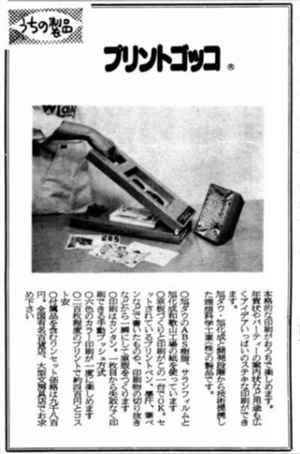100 Stories1941 The History of 100 Years and the Wakayama Plant
The Wakayama Plant celebrated its 100th anniversary right before Asahi Kasei’s 100th-year anniversary. In 1920, it was established as Nankai-Shigyo Co., Ltd. After that, it was merged with Asahi Kasei in 1941, and therefore it celebrated its anniversary before Asahi Kasei.
Nankai-Shigyo is located in Fujita Village (Gobo City, Wakayama Prefecture), which is known throughout Japan as the paper place. Hidaka River, which has a large water volume, is located to its south, and raw materials for making washi paper, such as paper mulberry, are cultivated in the basin of this river. It is the perfect place for paper manufacturers.
However, it faced many challenges at the start of its operation. Its foundation, buildings, materials, and products took devastating damage due to the great flood caused by the Hidaka River. The machinery and equipment were temporarily covered in water, but they relatively took little damage that could be repaired and restored. Within a year of the flood, the paper machine was test run and restored before production, and the distribution channels were expanded.
In 1933, they received an order from Nippon Chisso Kayaku for the first time. It was an order for paper for wrapping gunpowder. This was the start of their relationship with Nippon Chisso Kayaku, and the first step toward the later Wakayama Plant. Seven years later, in 1940, Nankai-Shigyo was acquired by Shitagau Noguchi, the president of Nippon Chisso Kayaku.
Later on, as the war raged, the Wakayama Plant was designated as an army plant. Fortunately, it did not receive any damage until the end of the war. Even though the Wakayama Plant survives when plants of the same profession were eliminated when World War II was coming to an end, many challenges were awaiting ahead. After the war, it was operating at a loss, forcing it to reduce its workforce, and suffered damage from typhoons and floods.
After the war, at the Wakayama Plant, they were producing greaseproof paper and parchment paper that are water and oil resistant. In 1960, they started producing acrylic latex, which is used in paint for civil engineering. It supported the civil engineering industry in the high-growth era with its waterproof material PETROCK™ and the adhesion enhancing materials MORTACK™ and POLYTLON™. MULECOAT™, a finishing material for exterior and interior construction, received great feedback at its launch. It was used in parts of the construction of the Imperial Palace and the prime minister’s official residence.
 The Wakayama Plant in the 1960s
The Wakayama Plant in the 1960s
In the 1980s, Riso Kagaku Corporation, which is known for printers and printing devices, decided on using thermosensitive washi paper. The Wakayama Plant’s products were used in Gocco, which rapidly became popular mainly for printing New Year’s postcards from home, and in Risograph, the silk-screen printer made for office use.
 An article about Gocco in the company
An article about Gocco in the company
newsletter in the 1970s.
The plant received a Safety Efforts Award in 1990. In 1993, It received the Safety President’s Award Category 1 for reaching 1.8 million hours accident-free. It even received an award for conducting work injury protection training, 4S activities, and visual management activities.
Since 2000, the plant has continued to expand actively, starting a new business based on latex, the photocatalytic coating material business, but as birthrates declined and more people were going paperless, the paper business was scaled down. In 2016, the functional paper business was stopped.
With this, its paper manufacturing business that lasted from Nankai-Shigyo ended after 96 years. However, the acrylic latex and photocatalytic are still operating, and in 2020, it celebrated its 100th year anniversary and 50 years of starting the acrylic latex business.
The Wakayama Plant survived and reached its 100th anniversary. However, the Wakayama Plant stopped operating in 2022 because the company decided to withdraw from the acrylic latex and photocatalytic. businesses.

